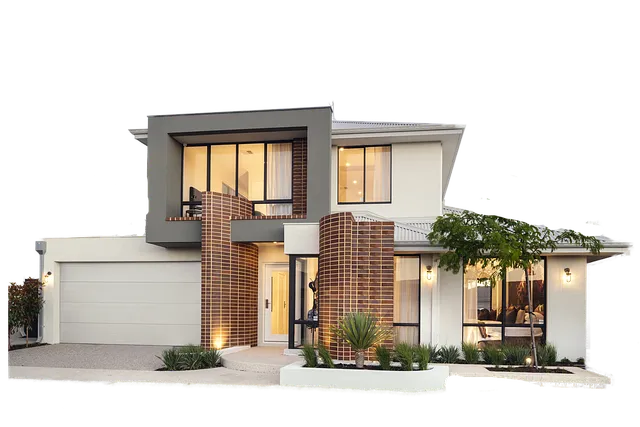Concrete cracks in residential foundations range from minor issues to serious structural concerns, requiring immediate attention for long-term stability. Common crack types include hairline, diagonal, and vertical cracks, caused by factors like poor construction, temperature extremes, moisture, and heavy loads. Accurate diagnosis is crucial for effective repair; permanent solutions like epoxy injection or carbon fiber reinforcement offer robust protection against further damage. Hydrofracturing is a non-invasive, eco-friendly method, while polymer-based sealants cost around $10-$30 per square foot. Regular maintenance, including inspection, drainage management, and sealer application, prevents future foundation damage. DIY crack repair for minor issues is possible and cost-effective.
Concrete cracks in residential foundations are a common concern, but effective repair solutions exist to ensure structural integrity. This comprehensive guide explores various concrete crack repair methods tailored for homes, from understanding crack types and assessing damage to choosing between temporary fixes and permanent solutions like epoxy injection and hydraulic fracturing. Learn about lightweight reinforcement, budgeting tips, and preventative measures to address this issue head-on.
Understanding Concrete Cracks: Causes and Types in Residential Foundations

Concrete cracks in residential foundations can range from mere aesthetics to serious structural issues, requiring prompt attention for long-term stability and safety. Understanding their causes is the first step towards effective repair. Common types include hairline cracks, usually caused by initial setting or shrinkage, and larger, diagonal cracks that often signal more severe problems like settlement or heave due to ground movement. Another type is vertical cracking, indicative of issues with the concrete mix or placement.
These defects can be exacerbated by various factors such as poor initial construction, exposure to extreme temperatures, moisture fluctuations, and heavy loads. Identifying the specific crack type is crucial in determining the appropriate repair method for residential foundation repair, ensuring a durable solution that addresses the root cause rather than merely covering up the problem.
Assess the Extent of Damage: Visual Inspection and Diagnosis

When addressing concrete crack repair, especially in residential foundation repair scenarios, the first step is a thorough assessment. This involves a visual inspection to determine the extent and type of damage. Cracks can vary greatly in appearance and significance—from superficial hairline fractures to deeper structural concerns. During the inspection, pay close attention to the width, length, and pattern of cracks, as these indicators will help diagnose the underlying cause.
Diagnosis is key because different issues require distinct repair solutions. For example, settlement cracks might result from soil movement or poor initial construction, while concrete shrinkage cracks are typically due to moisture fluctuations. Identifying the specific type of crack ensures that the chosen repair method aligns with the problem, ensuring long-lasting and effective results for your residential foundation repair.
Temporary vs. Permanent Repair Solutions: Choosing the Right Approach

When it comes to concrete crack repair, homeowners often face a choice between temporary and permanent solutions. Temporary repairs might offer quick fixes, but they are not meant to last long and can lead to further damage if not addressed properly. On the other hand, permanent repair methods provide longer-lasting results, ensuring your concrete structures remain intact for years to come. For residential foundation repair, choosing permanent solutions is generally recommended.
Consider the extent of the crack and its potential impact on the structural integrity of your home. Permanent repairs, such as those using epoxy injection or carbon fiber reinforcement, are designed to strengthen the concrete and prevent further cracking. These methods are more costly upfront but provide a robust solution, especially in preventing water intrusion and protecting against corrosion. By investing in permanent repairs, you ensure the longevity of your residential foundation repair, avoiding costly future replacements.
Epoxy Injection: A Popular and Effective Method for Structural Integrity

Epoxy injection is a popular and effective method for repairing concrete cracks, particularly in residential foundation repair scenarios. This advanced technique involves injecting a specialized epoxy into the cracked area, which then hardens to fill and stabilize the voids. By restoring structural integrity, epoxy injection prevents further damage and maintains the longevity of the concrete surface.
Compared to traditional crack filling methods, epoxy offers superior strength and flexibility, making it ideal for bearing heavy loads and withstanding environmental stresses. Its ability to bond tightly with concrete ensures a durable repair that can withstand extreme temperatures, moisture, and other factors that often contribute to concrete degradation. This makes epoxy injection an excellent long-term solution for homeowners seeking reliable Residential Foundation Repair.
Hydraulic Fracturing (Hydrofracturing): Non-Invasive Crack Repair Technique

Hydraulic Fracturing, or Hydrofracturing, is a non-invasive technique that offers an effective solution for concrete crack repair, particularly in residential foundation repair scenarios. This method involves the injection of a highly pressurized water mixture into the existing cracks. The powerful force fragments any solid material blocking the crack, expanding it open and allowing the water to penetrate deep into the structure. As the water fills the voids, it sets and hardens, providing long-lasting structural support.
This innovative approach is especially beneficial for residential properties as it offers a quick and efficient repair without causing significant disruption to the surrounding area. Unlike traditional methods that might require extensive excavation or complex construction, Hydrofracturing is a clean, precise process. It’s an eco-friendly option that ensures minimal site disturbance, making it an attractive solution for homeowners seeking prompt and discreet concrete crack repairs.
Carbon Fiber Reinforcement: A Lightweight, Durable Solution for Shallow Cracks

Carbon Fiber Reinforcement offers a lightweight yet incredibly durable solution for shallow cracks in concrete structures, including residential foundation repair. This innovative method involves weaving carbon fiber sheets into the crack, providing exceptional strength and stability while minimizing the need for extensive demolition or heavy materials. By integrating these fibers, the crack is effectively bridged, preventing further damage and ensuring structural integrity.
Ideal for both aesthetic and structural repairs, this technique is particularly beneficial for residential properties where cracks can be unsightly and indicative of underlying foundation issues. The versatility of carbon fiber reinforcement allows it to be applied to various crack sizes, making it a cost-effective and efficient option for homeowners seeking reliable concrete crack repair without the hassle of traditional methods.
Cost Analysis: Budgeting for Concrete Crack Repairs in Residential Settings

Concrete cracks in residential settings are a common concern, often requiring prompt action for both aesthetic and structural integrity reasons. When considering crack repair solutions, budgeting is a crucial step. The cost analysis involves assessing the extent of damage, which can vary widely depending on factors such as crack width, length, depth, and location (e.g., foundation walls, driveways). Simple cracks might only require filling with a polymer-based sealant, a relatively affordable solution costing anywhere from $10 to $30 per square foot.
More complex situations, especially involving structural damage or larger cracks, may demand complete replacement of the damaged section, inclusive of excavation, new concrete pour, and potential reinforcement. Such comprehensive Residential Foundation Repair can be significantly more expensive, with costs ranging from several hundred to thousands of dollars, depending on the size and complexity of the repair. Accurate budgeting is essential, considering the varying price points and ensuring you choose a solution that aligns with your residential foundation repair needs and financial capabilities.
Preventative Measures: Maintenance Tips to Avoid Future Foundation Damage

Regular maintenance is key to preventing concrete crack repair issues in residential foundation repair. Homeowners should inspect their properties for any signs of cracks, especially after extreme weather events or periods of significant structural stress. Early detection allows for quicker action and more effective repairs. Simple preventative measures include keeping the area around the foundation free from debris and plants that may disrupt the surface, as well as ensuring proper drainage to avoid water pooling which can cause further damage.
Additionally, maintaining an adequate clearance around the foundation walls is crucial. This space allows for air circulation, preventing moisture build-up that can lead to cracks. Regular re-application of sealers and coatings designed for concrete can also create a protective barrier against environmental elements. By implementing these maintenance tips, homeowners can significantly reduce the risk of future foundation damage.
Common Myths Debunked: Separating Fact from Fiction in Concrete Repair

Concrete cracks can be a common sight, leading many homeowners to believe that repair is either overly complicated or expensive. However, separating fact from fiction is crucial when considering concrete crack repair solutions, especially for residential foundation repair. One of the most persistent myths is that repairing concrete cracks is an intricate and costly process, often requiring complete replacement. In reality, minor cracks can be easily fixed with simple DIY methods, saving homeowners both time and money.
Another myth debunked is that waiting to fix cracks only leads to more extensive damage later. While some cracks may seem harmless, ignoring them could indeed result in bigger problems. Small repairs now can prevent significant structural issues down the line, making it a wise investment for any homeowner concerned about their residential foundation repair and overall property integrity.
